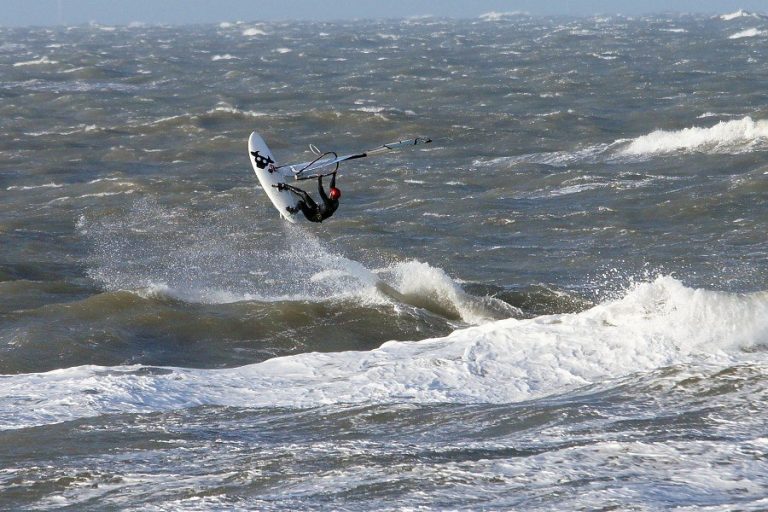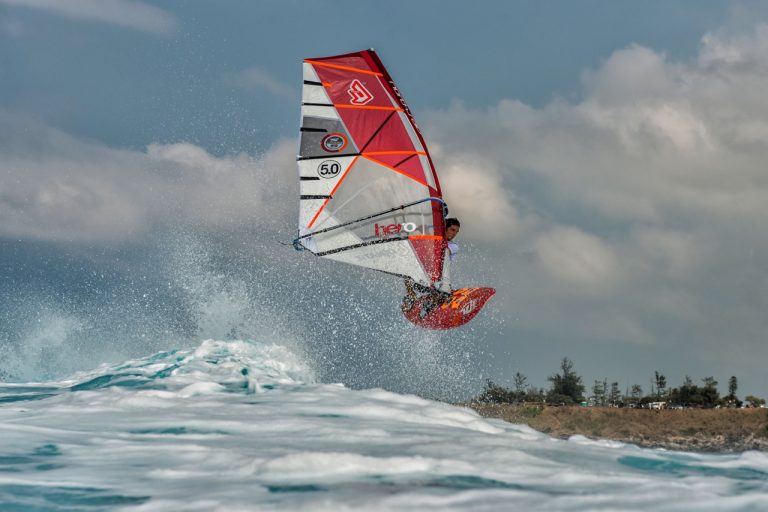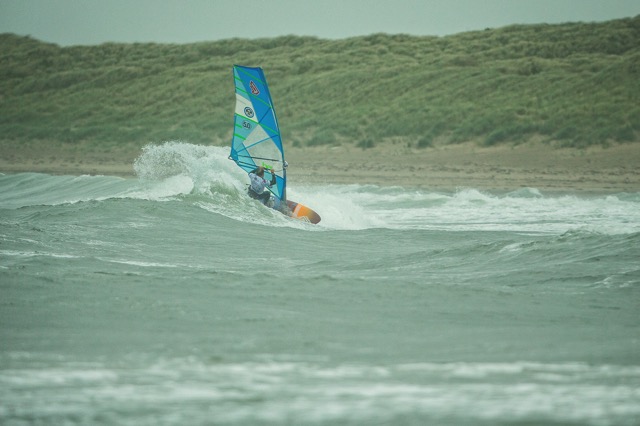If you’ve started windsurfing in recent years, it’s very likely that you were told the only harness to have was one that went around your waist; and from that moment on you never gave it another thought. But why is it that some people wear a seat harness and more importantly, are you missing out?
Adrian Jones and the Clones check it out…
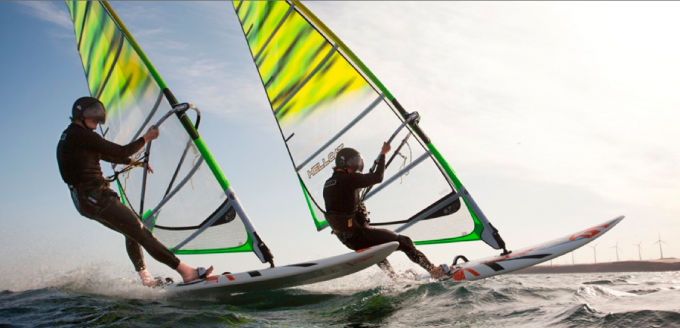
You have to wonder what people were thinking; just like flares, flat tops and corduroy trousers, there was a time in windsurfing history when ‘nappy’ (now more aptly named seat) harnesses were regarded as a ‘must have’ windsurfing accessory. Chest harnesses were still the rage, but back then there was no better status symbol than a neon coloured ‘nappy’ harness. Oh yes, the brighter the better. Pinks, day glow yellow and psychedelic oranges were the ‘must have’ colours.
In truth, it was fairly cringe worthy, and indeed rather shameful considering that we now have the cheek to laugh at kitesurfers for wearing their shorts over their wetsuits – if only they knew! Luckily they were still breakdancing badly at the school disco, when we windsurfers realised the error of our ways.
Things started to change in the early nineties, when a few of the Maui wave-elite began to wear waist harnesses which offered more freedom of movement for radical wave moves. Then Matt Pritchard stormed the high-wind Fuerteventura PWA Slalom event using ridiculously long lines and a waist harness; people really started to take notice. Soon the hype spread, the manufacturers leapt into action and the waist became the harness of choice for mainstream windsurfers.
Today, approximately 85% of all harnesses sold in the UK are waist harnesses. Even on the PWA slalom tour, where you would expect seat harnesses to be at their most popular, more than half the fleet are wearing waist. But look a little closer and there are a few notable exceptions. World number one and two, Bjorn Dunkerbeck and Antoine Albeau still wear seat harnesses; surely that says something?
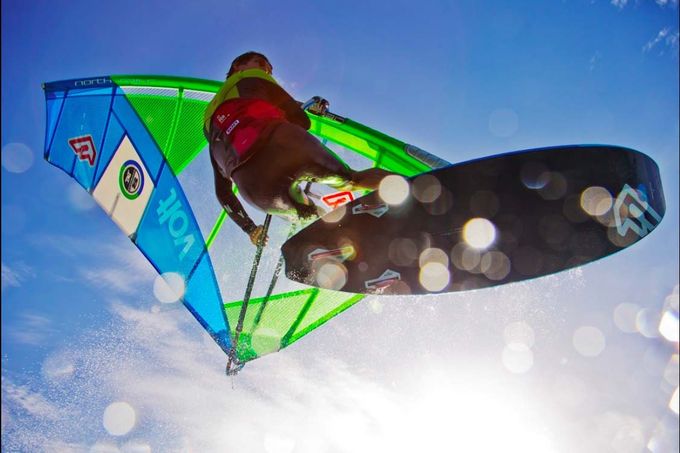
Boards revisits the seat harness to see if there is something we may all have overlooked…
To conduct the comparison, we deck out two clones in ION seat and waist harnesses and send them out for a head to head comparison, in a range of conditions, on freeride and freerace equipment.
If you usually wear a waist harness, it’s going to feel pretty strange putting a seat harness back on. They are now more discrete and certainly less restrictive than they used to be, but it still just feels ‘wrong’ to be parading around the beach in a pair of oversized underpants with a hook attached.
Moving quickly on, we hit the water and first thing to notice is that hooking in is slightly harder in a seat harness. It’s not difficult, but because the hook is a little lower and it’s generally easier to move your waist/chest towards the boom than your hips, the waist harness definitely has the edge. A comment from Bjorn during a recent interview confirms this:
‘For windy slalom, when gybing is more important, I change from seat to waist this makes it a lot easier to hook in and out quickly.’
Once you hook in, you immediately notice the advantage of a seat harness. It’s like sitting in an armchair rather than perching on a barstool. Having not gone sailing in seat harnesses for some time, it really is staggering just how much more relaxing the feel is in a straight line. The kit stabilises, locks down more and most noticeably, there seems to be a lot less physical effort required when using a seat harness. In a waist harness, your arms are trimming, your back is taking the load and your legs are pushing hard against the board, which makes things more physical. In a seat harness you just sit, allowing your weight rather than your strength to take the load. For blasting back and forth in comfortable conditions, it is a real eye-opener to feel how much easier the seat harness is, both in terms of technique and physical strength.
Waist – ION Relay Gold Edition – £149.95
Seat – ION Octane Windsurf – £119.95
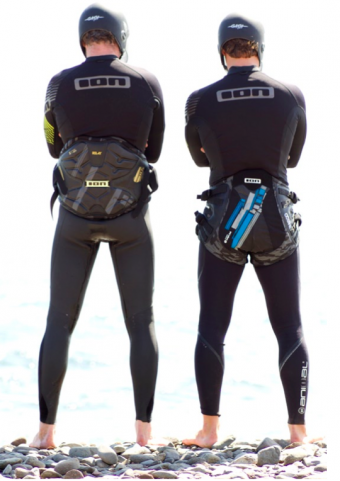 Everything feels a little more committed in the seat harness, you can sit on the power and when a gust hits it is easier to use your weight to prevent the board from lifting. In a waist harness a combination of your arms, back and legs take the load, allowing you scope to trim and control the amount of power more easily.
Everything feels a little more committed in the seat harness, you can sit on the power and when a gust hits it is easier to use your weight to prevent the board from lifting. In a waist harness a combination of your arms, back and legs take the load, allowing you scope to trim and control the amount of power more easily.
Technique wise, you might choose to have your boom slightly lower with a seat harness, this plants the board a little more, and your lines can be ever so slightly shorter to compensate. If you can sail in a waist harness, you will definitely have no problems in a seat.
When things start to get lively and control becomes an issue, the waist harness starts to show its worth. In the waist harness your legs take more load, bringing your shoulders inboard towards the boom and effectively sticking your bum out allows you to further increase the load on them even more. This acts to ‘plant’ the windward rail of the board down and hold it in the water. In a seat harness, the power pulls you up more, making the board feel livelier and the rider less able to hold it down.
Generally it seems that in the seat harness, you can hold the control and power for a little longer than in a waist, but once you reach the limit, there is not much scope to do anything more. In a waist harness, you start to ‘overpower’ a little earlier but have more possibility of controlling the power and can push the limit a bit more.
Overall, it’s impossible to say that either seat or waist is the absolute best choice, for freeride, freerace and race sailing, as both have their merits.
In comfortable conditions and where blasting is the priority, the seat harness takes the lead for it’s comfort and ease of use. In overpowered conditions, manoeuvres and in terms of pure simplicity, the waist harness shines through. In an ideal world you would have both; a seat for blasting and speed work, and a waist harness for more control and manoeuvre orientated conditions – which is what a lot of the top pros do.
If you want just one harness for all flat water conditions, our feeling is that heavier sailors (over 85kg) who naturally have less control issues and those with less physical strength, who don’t like sailing overpowered, are probably more suited to the seat harness. Whereas lighter riders who sail overpowered and certainly the more manoeuvre oriented sailors are probably better off sticking with the waist.
It does seem that in recent times, the merits of a seat harness have been overlooked in favour of the more simplistic waist harness. But, this could have been a massive oversight. Seat harnesses might not be as colourful and garish as they once were, but for flatwater use, they perhaps remain the ultimate ‘I know what I am doing’ status symbol. Bjorn and Antoine certainly think so!

